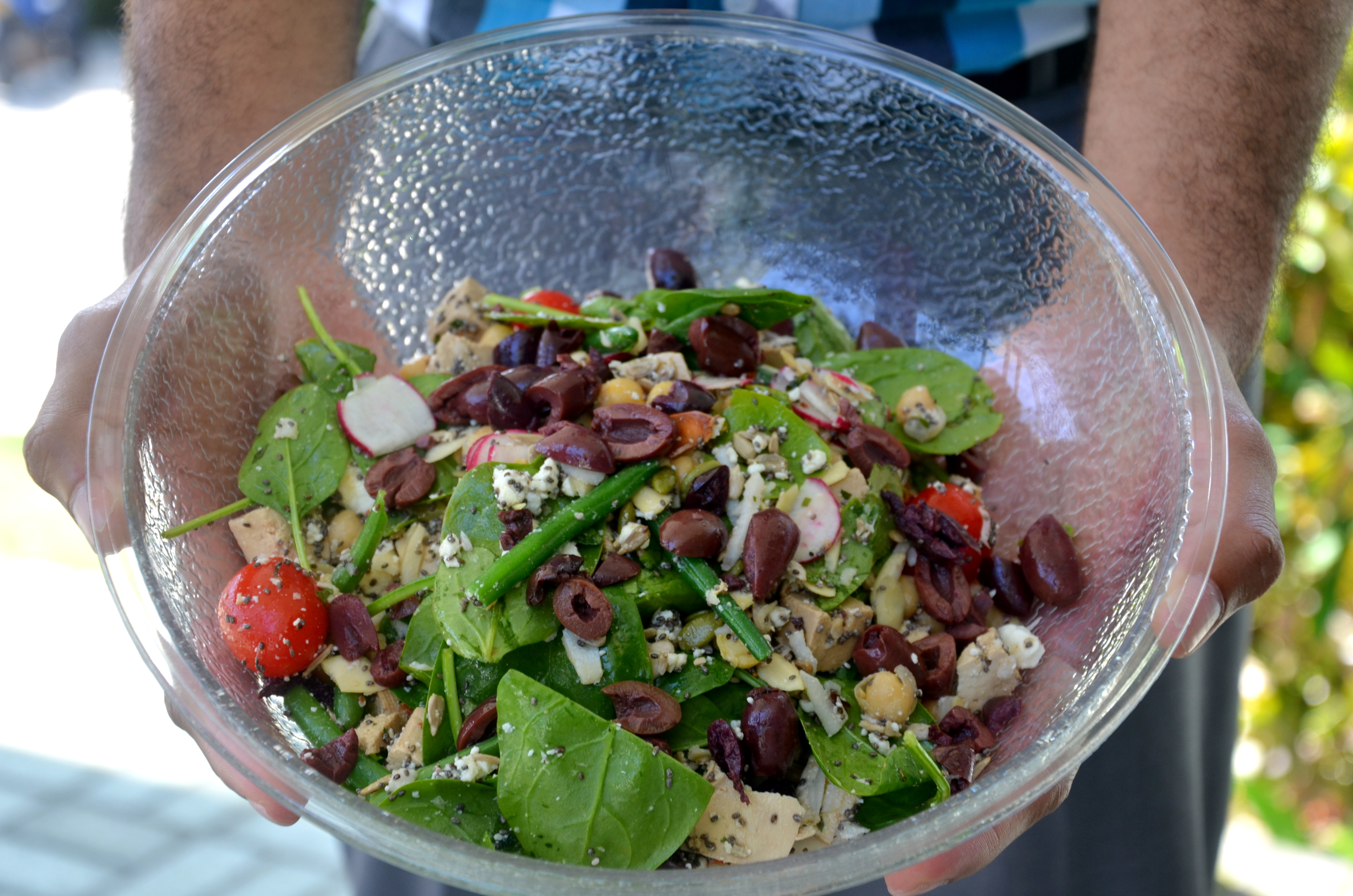
Want that “healthy glow” and perhaps a few less wrinkles? The answer could be staring you in the face while you eat your lunch.
Black olives are rich in fatty acids and antioxidants that nourish, hydrate and protect. Chief among those is vitamin E. Whether applied topically or ingested, vitamin E has been shown to protect skin from ultraviolet radiation, thus guarding against skin cancer and premature ageing. Create a healthy, glowing complexion by washing your face in warm water, applying a few drops of olive oil to vulnerable spots, and letting it work its magic for 15 minutes before rinsing it off. In fact, you can moisturise with olive oil before any bath, and even condition your hair by mixing it with an egg yolk and leaving it before rinsing and washing.
The vitamin E content in black olives also has the ability to neutralise free radicals in body fat. The anti-inflammatory abilities of the monounsaturated fats, vitamin E and polyphenols in black olives may help dull the severity of asthma, osteoarthritis, and rheumatoid arthritis.
Olives are known to eliminate excess cholesterol in the blood, control blood pressure and are an alternative source of dietary fibre to fruits and vegetables. They are not only tasty but nutritious and rich in minerals such as sodium, potassium, magnesium, iron, phosphorus and iodine. Olives contain polyphenols, a natural chemical that reduce oxidative stress in the brain. Eating a daily serve of olives helps to improve your memory by up to 25 per cent.
On the topic of olives, ‘cold pressed’ means that the olives are kept under a temperature of 27ºC when the oil is being extracted to retain more nutrients, flavours and aromas. ‘Extra virgin’ means that the olives are only pressed once to produce the highest possible quality oil.
PICKLING OLIVES
Ingredients
plain table salt (not iodised)
vinegar
water
Method
Make sure olives are fresh and are firm to touch. Cut the skin 3 times along the olives and drop them into cold water. Leave in water for 1–3 days, changing water every day. (Green olives require 3 days; black olives 1 day.) Pack olives tightly into clean jars with tight-fitting lids. Fill the jars up with water, then tip it into measuring jug. This helps you calculate how much brine to make. When you’ve done all the jars, add a little more water because a bit of extra brine if needed. Use a ratio of 10:1, water to salt. This means for every litre of water you need 100 grams of salt. Dissolve the salt in the water, add about 2 per cent vinegar (this is 20 millilitres per 1 litre of brine). Fill up the olive-filled jars with the brine and allow to stand for a while, so that air bubbles can escape. Top up the jars with brine if required and seal the jars. Check the jars after a few days, because you may need to top them up with brine. Don’t be concerned if the brine seeps out slightly as the pickling gets underway. Keep olives in brine for at least 3 months, then open a jar and try them. If there’s a creamy white scum on the surface (yeast) and the olives and brine smell pleasant then normal fermentation is taking place and there’s no concern. However, if the scum looks grey and hairy and/or if the brine smells foul, toss them out! Something has gone wrong with the fermentation. If the olives are too bitter for your taste, close them up and leave in the brine longer. Once you are happy with the flavour, they are ready to eat. Store your olives in the brine.
This recipe is from the the book, From Paddock to Plate.
“THE MARKET” SALAD
(pictured above)
Ingredients
olives, handful
fresh spinach
cherry tomatoes
green beans
tofu, cubed
radish, sliced thinly
red pepper, sliced thinly
feta, crumbled
chickpeas
pepitas
sunflower seeds
chia seeds
coconut, shredded
Method
Combine all ingredients in a bowl and enjoy!

